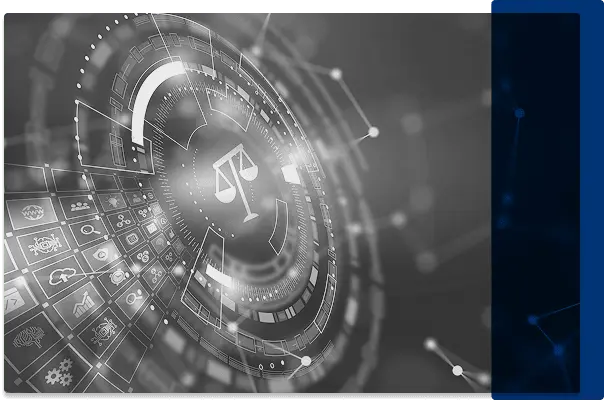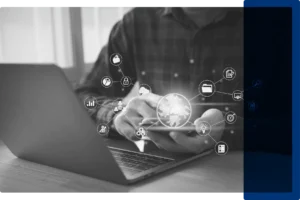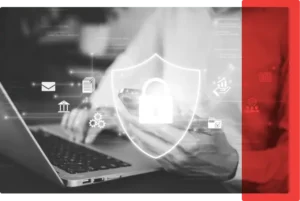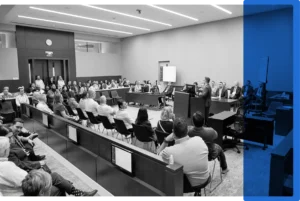
10 Jun
2025
Bridging Law and Technology: A Conversation with Cybersecurity Researcher Daniel Shin
At For The Record, we stay at the forefront of security in the digital courtroom space by actively engaging with leading cybersecurity experts to understand emerging threats and innovations. Most recently, we spoke with Daniel Shin, a Cybersecurity Researcher at the Center for Legal and Court Technology (CLCT), William & Mary Law School. As both a licensed attorney and a Certified Information Privacy Professional (CIPP/US), Daniel offers a unique perspective on the intersection of law, cybersecurity, and artificial intelligence (AI).
Daniel’s work focuses on ensuring court technology remains both effective and secure. His journey began with a passion for legal technology, ultimately leading him to explore courtroom applications of AI and cybersecurity from judicial and trial attorney perspectives. Through research, presentations, and direct engagement with judges and court administrators, Daniel highlights the real-world implications of these technological advancements.
The Growing Challenge of Deepfakes
One critical focus of Daniel’s research is the rise of deepfake technology. Advances in this technology have enabled deepfakes to evolve into a sophisticated tool capable of generating hyper-realistic audio and video, blurring the line between real and manipulated content. The increasing availability of publicly available generative AI tools has made deepfake media creations accessible to the general public, allowing anyone to create fake but realistic synthetic media with little to no technical skill.
Daniel notes that lawmakers and legal experts are actively working to develop balanced approaches that allow for technological innovation, while minimizing harm. He advocates for legal frameworks that both protect free speech and ensure public safety, especially when it comes to the misuse of deepfake technology. While criminal regulations face challenges due to First Amendment rights, Daniel emphasizes that civil lawsuits can provide recourse for those affected by AI-generated content.
At the same time, deepfake technology has contributed to the rise in implementations of innovative solutions, such as cryptographic digital signatures and digital watermarking, which are working towards better detection and verification of media content.
Deepfake Issues Impacting Courts
Courts face two major risks from deepfake technology: the submission of falsified evidence and the potential manipulation of official court records. While court records can be protected through a manipulation-resistant, end-to-end system that secures digital files from capture to access, digital evidence presents a greater challenge. Unlike court records, which remain within controlled environments, digital evidence often originates from external sources—such as surveillance footage, social media, or personal recordings—making it more susceptible to tampering before it ever reaches the courtroom.
As courts increasingly rely on digital evidence, strengthening safeguards and verification processes is essential. Daniel notes this includes implementing advanced forensic analysis tools to detect deepfakes, strict chain-of-custody procedures to track evidence, and cryptographic signatures and digital provenance tracking to verify the authenticity of audiovisual evidence. Additionally, ongoing judicial training is crucial to help legal professionals recognize manipulated media and assess its reliability.
Further research into forensic analysis is ongoing, with specialized techniques continuously evolving to detect subtle inconsistencies that may indicate manipulation. As AI-generated media becomes increasingly sophisticated, courts must adopt robust authentication measures to maintain the integrity of legal proceedings.
Enhancing Digital Court Record Security for Modern Courtrooms
For The Record’s commitment to security—evidenced by its industry-leading SOC 2, Type 2 and UK Cyber Essentials certifications, along with adherence to the FBI’s Criminal Justice Information Services (CJIS) policy—aligns with Daniel’s research on protecting digital court data. When properly configured and monitored, cloud-based solutions like FTR Justice Cloud offer significantly stronger security than traditional court reporting methods, where stenographers or court reporters might store records on personal laptops vulnerable to breaches, loss, or tampering.
By integrating encryption, multi-factor authentication, and comprehensive activity and audit logs, these solutions ensure digital court records remain tamper-proof and securely stored. Additionally, as with digital evidence measures, cryptographic digital signatures and digital provenance tracking help mitigate a range of cybersecurity threats that could impact court records. This digitization provides a more robust and controlled environment for preserving court records, ensuring authentication, security, and long-term integrity for future auditing and verification.
Daniel’s insights reinforce a crucial reality: as legal technology advances, so must its security measures. Courts, legal professionals, and technology providers must work together to address AI and cybersecurity threats proactively. By fostering collaboration between legal experts and cybersecurity researchers, we can ensure that modern courtrooms remain both innovative and secure.
Read more on how our enterprise-grade security features protect your sensitive data from external threats.



